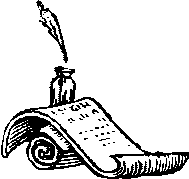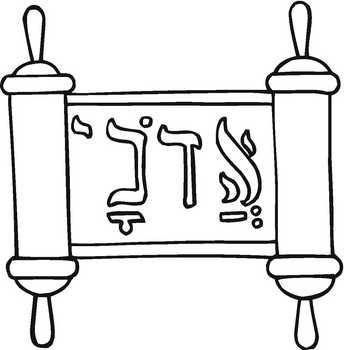The Value and Danger of
Bible Cross-References
by Jack P. Lewis
(from the Gospel Advocate, March 5, 1987, pp. 144-146)
The cross-references in a Bible are not a part of its inspired content but are a study aid supplied by translators and editors. Though the references being printed in a Bible may suggest their reliability to the uninformed reader, the cross-references reflect the theology of the compilers and carry no more authority than does any other commentary. They may be a help to the student in some cases, but in others they may steer him in the direction of a particular theology the editor wished to advance.
The Protestant Bible has one set of references, the Catholic another, and the Jewish a third. Especially tendentious reference combinations are found in such efforts as the New World Version used by the Jehovah's Witnesses and the Scofield Reference Bible (1909; second edition, 1917) and the New Scofield Reference Bible (1967) favored by Dispensational Premillennialists to promote their particular theological views.
History of Cross-References
The process of compiling cross-references began long ago. The Masoretes, in addition to supplying a system of vowels for the Hebrew text, collected data on occurrences of rare forms and on parallel occurrences of vocabulary. These were published in the marginal and final Massorah.
This practice of accumulating material to aid the reader in knowing other verses in which a word or idea occurs passed into the Greek and Latin Bibles, and from these sources passed into the early English Bibles. As early as 1483, the printer Herbort used some marginal references; then it became common to print references to parallel passages in the margin.[ 1 ] While the references printed overlap to some degree, each Bible had its own set of references.
Rule number seven of the instruction to the translators of the King James' Version stated: "Such quotations of places to be marginally set down, as shall serve for the fit reference of one Scripture to another."[ 2 ] The King James Bible came from the press in 1611 with about 9,000 references, scarcely one-seventh of the number of a modern KJV Bible. More than half of these references were taken from Latin manuscripts and printed Bibles.[ 3 ]
At various times in its history, the cross-references of the KJV have been revised. F.H.A. Scrivener said the earlier revisers of 1629 and 1638 corrected erroneous references:
. . . leaving to their successors the more congenial employment of adding largely to the original texts, a liberty which seems to have been taken by almost everyone who prepared a special edition. Whensoever a reference had once found its way into the margin, there it was allowed to remain, unchallenged and even unexamined, however frivolous or mistaken it might be.[ 4 ]
New references were added in 1647 when John Canne published a Bible ". . . with conconancie of Parallel Scriptures taken out of the last Annotations, and all set in due order and place."[ 5 ] Others were added in an edition by J. Hayes in 1677;[ 6 ] then in 1678 Dr. Anthony Scattergood added 7,250 more references in an edition no longer extant.[ 7 ]
William Lloyd in 1701 added more,[ 8 ] and another 350 were added by F.S. Paris and H. Therold in 1762.[ 9 ] Benjamin Blayney in 1769 added 30,495 new ones,[ 10 ] and C. Crutwell added still others in 1785.[ 11 ]
In its revision effort of 1852, the American Bible Society sought uniformity in reference rather than revision of the whole. Only in a few instances did they diminish the number of an over-full page, by omitting some of those, which on actual examination, proved to be of little or no importance.[ 12 ] This revision was withdrawn from Circulation when public protest proved to be too strong.
Scrivener pointed out that the accumulated references in KJV Bibles were inaccurate and varied in accuracy from edition to edition and that those of the Psalms are particularly inaccurate because they refer to the Vulgate numberings instead of the English.[ 13 ] Scrivener himself worked the whole system over in 1873 [ 14 ] in preparation of the Cambridge Paragraph Bible.[ 15 ]
In 1962,the American Bible Society published for the first time a King James Version Reference Bible. The references included were based on the Cambridge Paragraph Bible and the ERV New Testament with Fuller References (W.F. Moulton, et. al., editors). References were given only for quoted or parallel passages.[ 16 ]
In their revision of 1881-85, the English revisers stated in their preface that they used "Marginal references to other passages that are either strictly parallel, or serve the purpose of illustrating or justifying a particular reading." They further state in the preface to the Old Testament:
For the sake of facilitating the use of the Old Testament, we have provided it with marginal references to parallel and illustrative passages, and with topical headings. In preparing the references we have been assisted by able scholars not connected with the Old Testament Company. The aim has been to illustrate and elucidate the meaning by referring to other passages which, either in word or in thought, bear a resemblance to the one under consideration. Previous lists have been consulted, but they have been carefully sifted, and the effort has been made to omit everything that is irrelevant or misleading.[ 17 ]
In the process of the revision, Scrivener and Moulton compiled an elaborate body of material of references to the New Testament text. This material was placed at the disposal of a small committee representing the Cambridge and Oxford University Presses. In 1898, a Bible was issued in America with the new references,[ 18 ] and in 1903 a similar edition was issued in England.[ 19 ] A New Testament was issued in 1910 with "fuller references" from the above material.[ 20 ]
The American Standard Version was issued in 1901 with references in a central column and references to cited passages in the margins.[ 21 ] In 1910, a Cross-Reference Bible using the ASV as text was issued under the editorship of Harold E. Monser.[ 22 ]
The 20th century has seen many efforts at supplying reference systems. J.B. Rotherham's Bible (1902) had selected references.[ 23 ] In the Chain-Reference Bibles, the editor has combined references to expound his own understanding of Scripture.
In 1908, there appeared The Marginal Chain-Reference Bible containing Thompson's Original and Exhaustive System of Topical and Chain References in which topics printed on the margins are connected to enable the reader to trace through the entire Scripture any important subject. It was compiled and edited by Frank Charles Thompson.[ 24 ] A second edition called The New Chain Reference Bible was published by B. P. Kirkbride Bible Co., Indianapolis, Ind., in 1929, and a "third improved edition" came out in 1934.
In 1909, The Scofield Reference Bible, Authorized Version, with a new system of connected topical references edited by Cyrus Ingersol Scofield was issued. "The reference system and the introductions in the various books set forth pre-millennial and dispensational teachings."[ 25 ] In 1911, Tercentenary Commemoration Bible[ 26 ] carried Scofield's notes. Then Scofield brought out a revision in 1917, [ 27 ] A new and improved edition was issued in 1946. Later, in 1967, a group of sympathetic revisers brought out The New Scofield Reference Bible. The "Introduction to the 1967 Edition" states:
All marginal cross references have been checked and hundreds of new references have been added. Chain references showing the first and last appearances of important subjects (e.g. inspiration, Holy Spirit, Day of the Lord, etc.) and carrying the reader through the major references to them in the O.T. and N.T. are invaluable in helping him to compare Scripture with Scripture for better understanding of the great truths of divine revelation.[ 28 ]
It is said that Floyd Gardiner of Binghamton, N.Y., spent three years checking and adding to the marginal references.[ 29 ]
One of the most striking ways in which current Protestant Bible references differ from earlier ones is in the dropping of references to the Apocrypha. The revision of the Apocrypha was an integral part of the KJV revision project in 1611; its 14 books were bound up between the Old and New Testaments with the section heading "Apocrypha." This practice was terminated in the early part of the 19th century. In 1611 the canonical books had many cross-references to the Apocrypha. These were most numerous in the Pentateuch, less in the Historical Books, and still less in the Prophets. There were at least eight cases in the New Testament. All the references to the Apocrypha have been dropped out of current KJV Bibles, despite the fact that John 10:22 alludes to the Feast of the Dedication. If the allusion to 1 Maccabees 4:59 had been retained, it would explain to the reader what is meant.
Erroneous and Misleading Cross-References
Despite the care with which the references have been combed, one of the most notorious erroneous references in some current printings of the KJV is found in Revelation 13:14 where the beast deceives "saying to them that dwell on earth that they should make an image to the beast which had the wound by a sword and did live." The cross-reference given is to 2 Kings 20:7 where Isaiah said of Hezekiah, "Bring a cake of figs and let them lay it on the boil, that he may recover." The only point of contact in the two cases is in the idea of recovery, but the note puts contexts together that have nothing in common.
All the way back to the time of Irenaeus (second century), it has been popular to identify the antichrist (1 John 2:18,22; 4:3; 2 John 7) and the man of sin (2 Thessalonians 2). Neither 2 Thessalonians 2 nor the relevant verses in John's epistles carried references in 1611.
In some KJV reference Bibles today, 1 John 2:18 carries references to 2 Thessalonians 2:3; 2 Peter 2:1; 1 John 4:3; Matthew 14:5,24; and 2 John 7. First John 2:22, which also has the term "antichrist," has no cross references. First John 4:3 refers back only to 2:18, 22; 2 Thessalonians 2:7 and 2 John 7; and 2 John 7 refers to 1 John 2:22 and 4:1-3.
The man of sin (2 Thessalonians 2:3) carries a cross reference to Daniel 7:25; 1 John 2:18; Revelation 13:11. In the American Standard Version (1901), the reader at 1 John 2:18 is referred to verse 22; 4:3; 2 John 7, and is told to compare Matthew 24:5,24. First John 4:3 has "compare 2 Thessalonians 2:3-7 (?)." However, that antichristos (2 John 7) and pseudochristos (Matthew 24:24) have any connection with each other is at least debatable.
The New American Standard Bible on the phrase "it is already in the world" (1 John 4:3), in addition to 1 John 2:18, refers the reader to 2 Thessalonians 2:3-7. Its reference to Matthew 24:5 refers the reader to Acts 5:36f., but there is no evidence that Theudas claimed to be the Christ; therefore, the connection is, to say the least, debatable.
On this same topic, the New Scofield Bible, in addition to the places in the letters of John where the word "antichrist" occurs, refers the reader in each occurrence to Revelation 13:11 where the word "antichrist" does not occur but where that Bible has a speculative note: "Many identify 'the beast coming up out of the earth' as the Antichrist." Antichrist here is spelled with a capital letter, and is theorized to be a coming eschatological figure. The man of sin (2 Thessalonians 2:3) is speculatively connected with Daniel 7:8; Revelation 13:2; and 19:20. Revelation 19:20 has a speculative summary of the eschatological views held by the editors.
The reason a reference to 2 Thessalonians on the word "antichrist" in the epistles of John is missing in the Scofield Bible is easy to determine. In the Scofield system, "the man of sin" is speculatively connected with the first beast (Revelation 13:1), not with the second one, which Scofield identifies with the Antichrist. In all of these notes on "the antichrist," whether Scofield's or others, we are confronted with speculative exegesis, probably none of them valid.
The term "great tribulation" of Matthew 24:21 had no note in 1611. In the ASV(and NASB)reference is made to Daniel 12:1 and Joel 2:2. But in the New Scofield, one is referred to verses 22,29; Mark 13:19; Psalm 2:5; and Revelation 7:14. In Revelation 7:14 there is an extended note expounding speculative dispensational ideas on "the great tribulation," insisting that the term is specifically used of a future time.
Isaiah 14:12, which uses the term "Lucifer" in the KJV,had no cross-reference in 1611. A marginal optional reading "0 day-starre" was furnished. The ASV drops the phrase "Lucifer" in favor of "day-star" and refers to 2 Peter 1:19; Revelation 2:28; and 22:16. The first of these has "day-star" but no identifiable relevance to Isaiah 14:12; the last two have "morning star" and the "bright, the morning-star." The connection is on the English word "star," not on the original languages or upon the theme discussed.
The NASB has a marginal note: "Helel; i.e. the shining one," but has no references on this item. The Scofield Bible refers the reader to Luke 10:18: "I beheld Satan as lightning falls from heaven," and to Revelation 12:7-9, which speaks of the devil and Satan. Isaiah 14:12 actually describes the fall of the king of Babylon and has nothing to do with Satan; hence, the cross-reference is misleading.
Conclusion
From this brief historical survey and spotty sampling of cross-references, certain cautions should be issued. Astute scripture combinations made by those with theological views to expound are entirely speculative and in most cases are quite dangerous. Cross-references to other occurrences of English words that are not based on like occurrences of Greek or Hebrew words in the original have no validity and merely lead the reader along the arbitrary choices of English words made by translators.
On the other hand, great help is given when one is told the Old Testament location of a verse or of a word a New Testament writer is using. It is helpful to know of parallel passages, and it is helpful to know that a word or even an idea occurs in another setting.
The danger in cross-references arises when the connection suggested is weak or very questionable. Every reader is to be cautioned against attributing any authority to cross-references.
Notes
1. M.H. Black, "The Printed Bible," in The Cambridge History of the Bible; The West from the Reformation to the Present Day, ed. S.l. Greenslade (Cambridge: University Press, 1963), p. 419.
2. John Lewis, A Complete History of the Several Translations of the Holy Bible and New Testament into English (London: W. Baynes, 1818), p. 317.
3. F.H.A. Scrivener, The Authorized Edition of the English Bible (1611) Its Subsequent Reprints and Modern Representatives (Cambridge: University Press, 1910), p. 117.
4. Ibid., pp. 118-19.
5. T.H. Darlowand H.F. Moule, Historical Catalogue of the Printed Editions of the English Bible 1525-1961, revised and expanded by A.S. Herbert (London: The British and Foreign Bible Society, 1969), no. 601.
6. John Eadie, The English Bible, 2 vols. (London: Macmillan, 1876), 2:308; Darlow and Moule, Historical Catalogue, no. 736, d. 702.
7. Dictionary of National Biography, 17:896.
8. John Eadie, The English Bible, 2:308; Darlow and Moule, Historical Catalogue, nos. 867, 868.
9. Ibid., no. 1142.
10. John Eadie, The English Bible (London: Macmillan, 1897),2:303-7; Darlow and Moule, Historical Catalogue, no. 1194.
11. Ibid., no. 1302.
12. Report on the History and Recent Collation of the English Version of the Bible (New York: American Bible Society's Press, 1852), p. 30.
13. Scrivener, Authorized Edition, p. 118.
14. Darlow and Moule, Historical Catalogue, no. 1995.
15. Scrivener, Authorized Edition, pp. 116-27.
16. American Bible Society, Essay, no. 16, VI, B, pp. 3,49; Courtesy of the American Bible Society Archives.
17. Preface to the Old Testament, p. vi.
18. Darlow and Moule, Historical Catalogue, no. 2076.
19. Ibid., no. 2124, 2127.
20. Ibid., no. 2163.
21. Ibid. , p. 446.
22. Ibid., no. 2162.
23. Ibid., no. 2114.
24. Ibid., no. 2152.
25. Ibid., no. 2175.
26. Ibid., no. 2169.
27. Ibid., no. 2200.
28. Ibid., "Introduction to the 1967 Edition," p. vi.
29. Ibid., p. viii.


